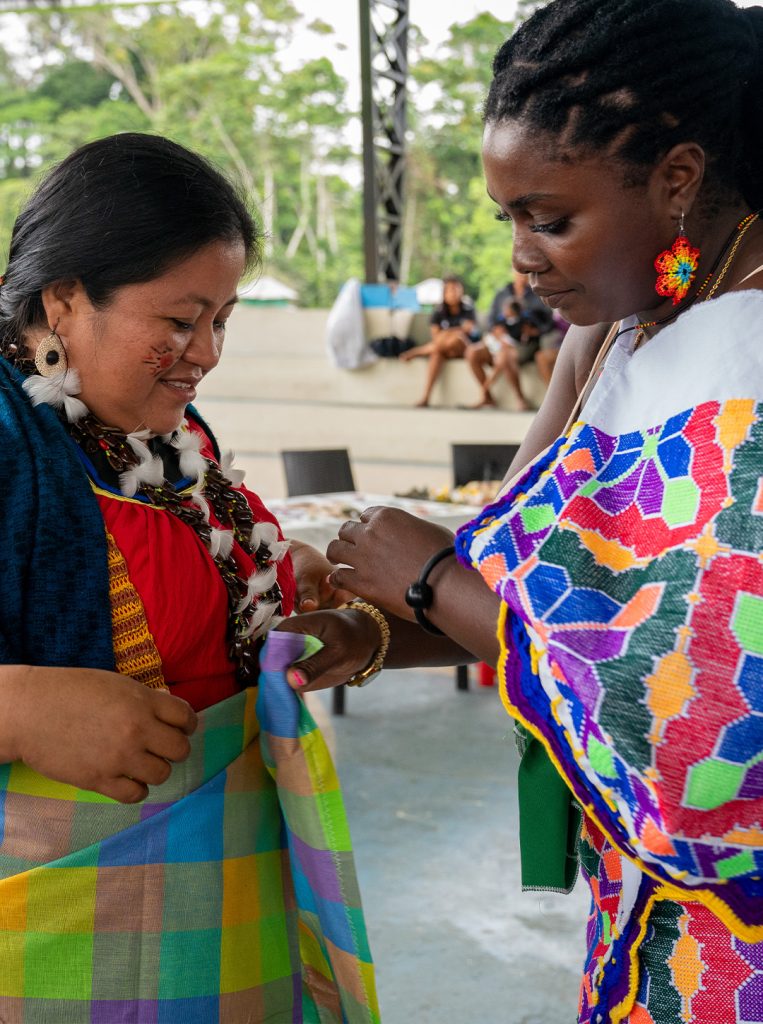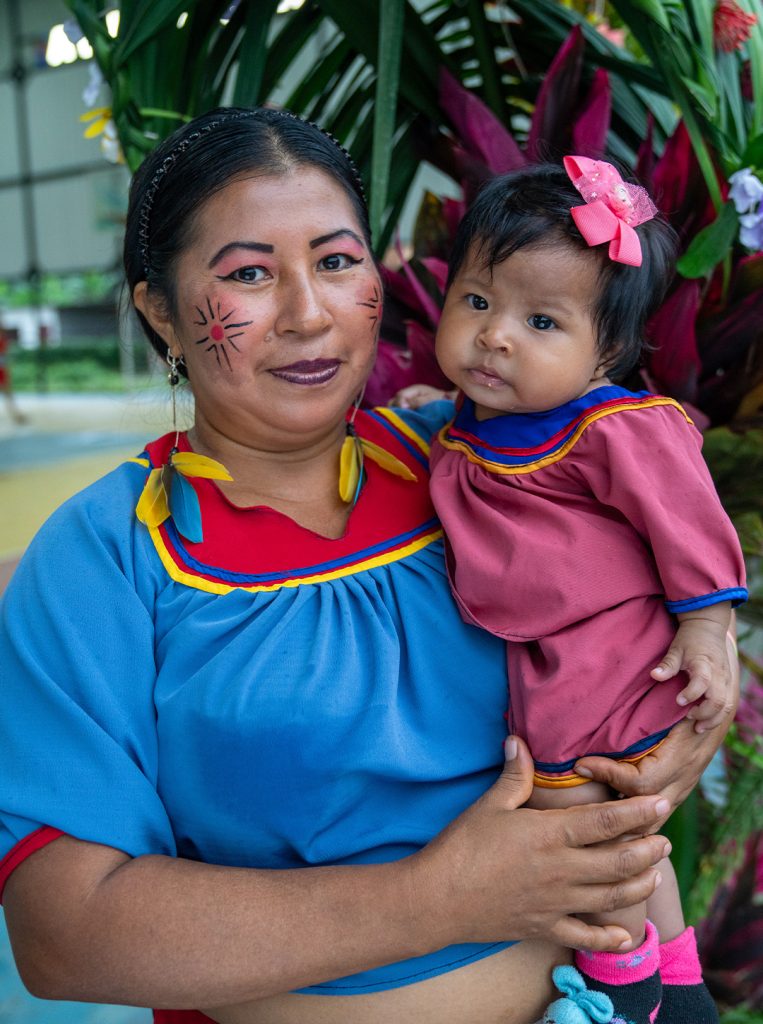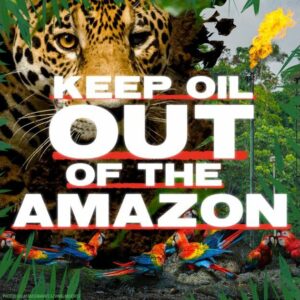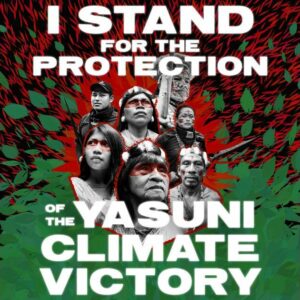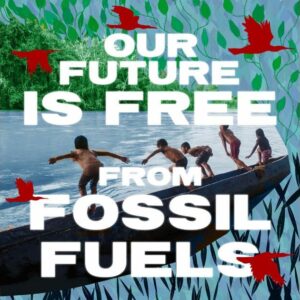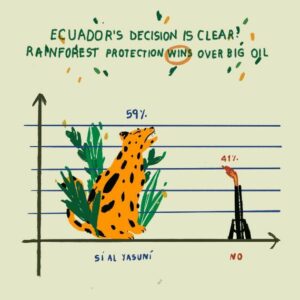From Suriname to Ecuador:
A Meeting to Defend the Living Amazon
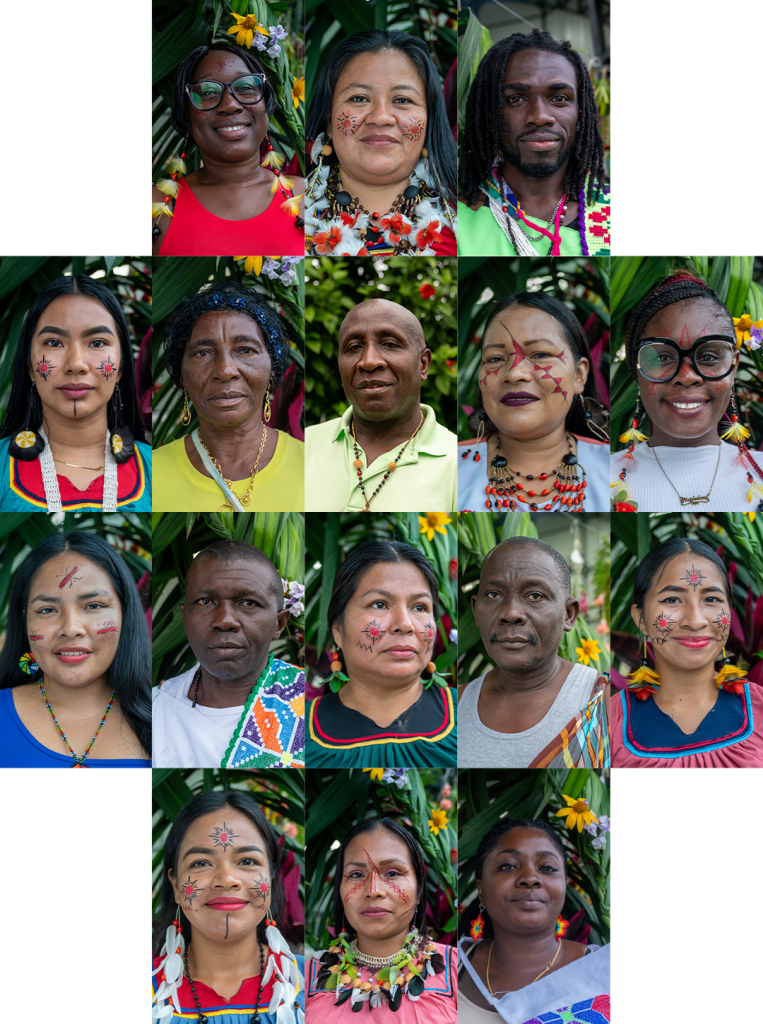
INTERVIEW
Hugo Jabini
Environmental Leader of Saamaka and Goldman Prize Recipient Shares Why Territorial Defense is Everyone’s Responsibility
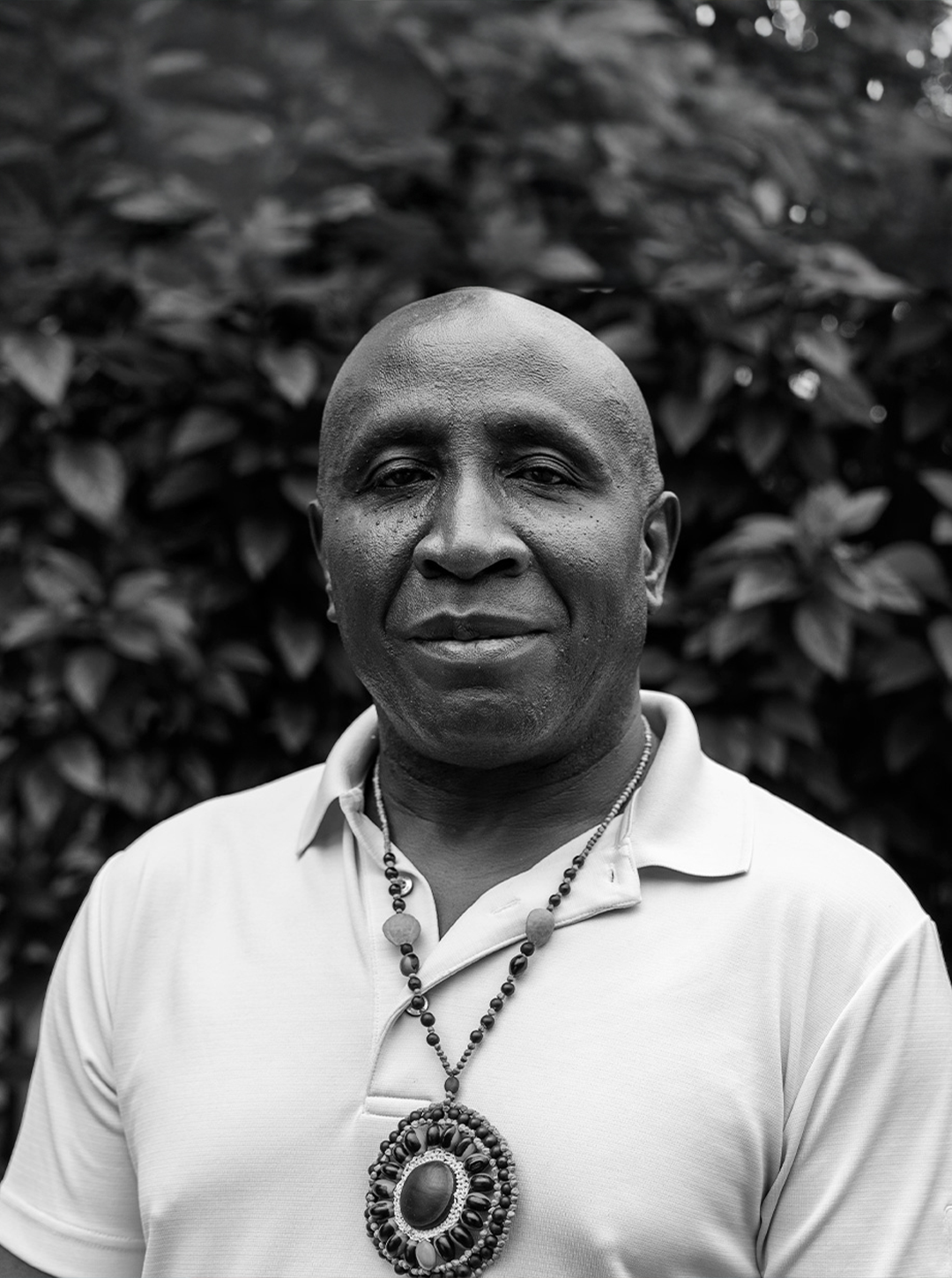
ESSAY
COMMON STRUGGLES CONNECT THE AMAZON
Each People has a different origin. Some are born from deep lagoons and rivers, others from mountains, and still others emerge from sacred spaces. The Saamaka people were born from escape. They used the wisdom of their feet to flee Dutch colonial chains and find refuge in the thick rainforest of Suriname, in South America.
There, they learned from those who know the jungle best: the Indigenous Peoples. And the wisdom of their feet traveled to all of their senses so that they could learn to make the forest their home. They learned to read the wind and the river. To feel the living earth. To listen to the trees and the birds. And as they learned, their roots sprouted.
Almost 3,000 miles away from Suriname, the Indigenous Peoples of the A’i Cofán, Siekopai, Siona, and Waorani of the Ecuadorian Amazon were born a different way: from the jungle, to coexist with it.
Recently, the paths of the Saamaka from Suriname and the Indigenous Peoples of the Ecuadorian Amazon crossed, brought together by their shared struggle for self-determination and territorial autonomy. In the heart of the Amazon Ceibo Alliance and Amazon Frontlines hosted delegations from the four Indigenous nations and the Saamaka people, where they exchanged their traditions, their ancestral wisdom, and committed to helping each other protect their territories and their people.
Through dance and food, they shared their ancestral knowledge. Through vivid stories, they found new sources of energy to reclaim their ancestral traditions. Throughout the exchange, a clear thread connected everyone: the knowledge that the forest permeates everything. And that the defense of that forest is a collective work.
“Now, when I hear about Ecuador, I think of the actual people, in the faces that I saw here, “ said Hugo Jabini, environmental leader of the Saamaka of Suriname. “And for my people, who have never travelled, who come from remote places, it was valuable to see that we’re not alone, that there is a common struggle. That motivates us.”
SPOTLIGHT IMAGES
MOTIVATION FROM SAAMAKA’S MATRILINEAL TRADITION
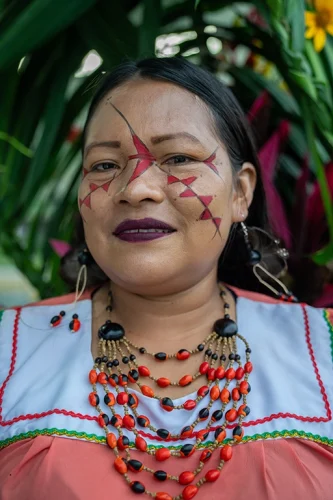
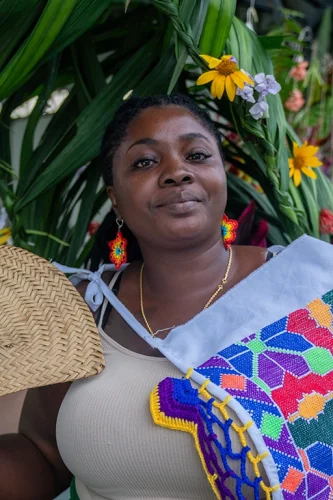
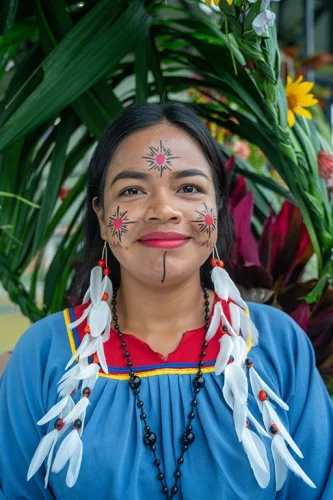
On the second day of the gathering, members of the Cofán Women’s Association of Dureno (Sukû) and the Women’s Association of Colors (Siekonomi) sat, danced, and conversed with women from Saamaka to share their experiences about leadership and territorial defense.
The Saamaka people live in a matrilineal society, which means inheritance and identity pass from mother to daughter. The Cofán and Siekopai women, who live in a patriarchal society, heard about the way Saamaka culture encourages women’s leadership. They left the gathering with a strong sense of purpose and a reminder that leadership takes many forms. They committed to continuing their leadership practices, including strengthening their autonomous economies through their businesses.
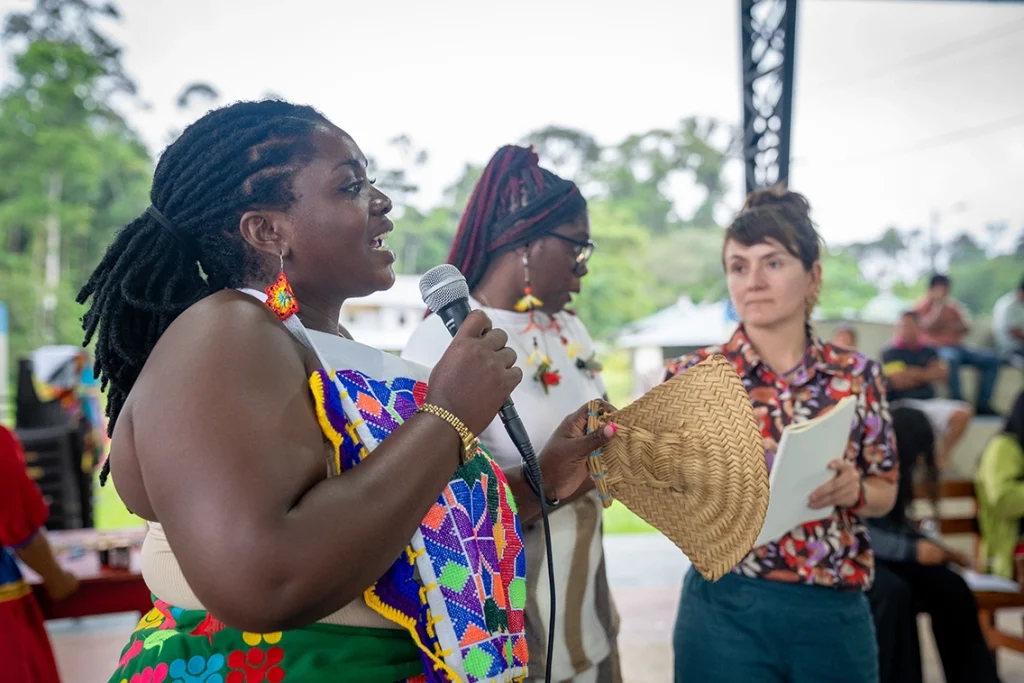
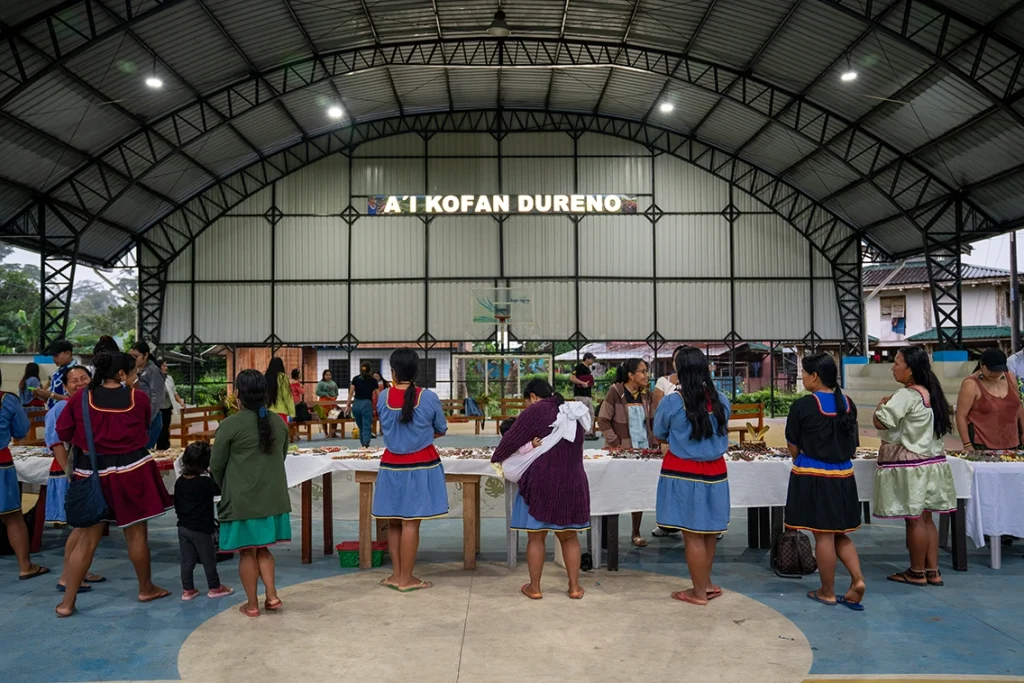

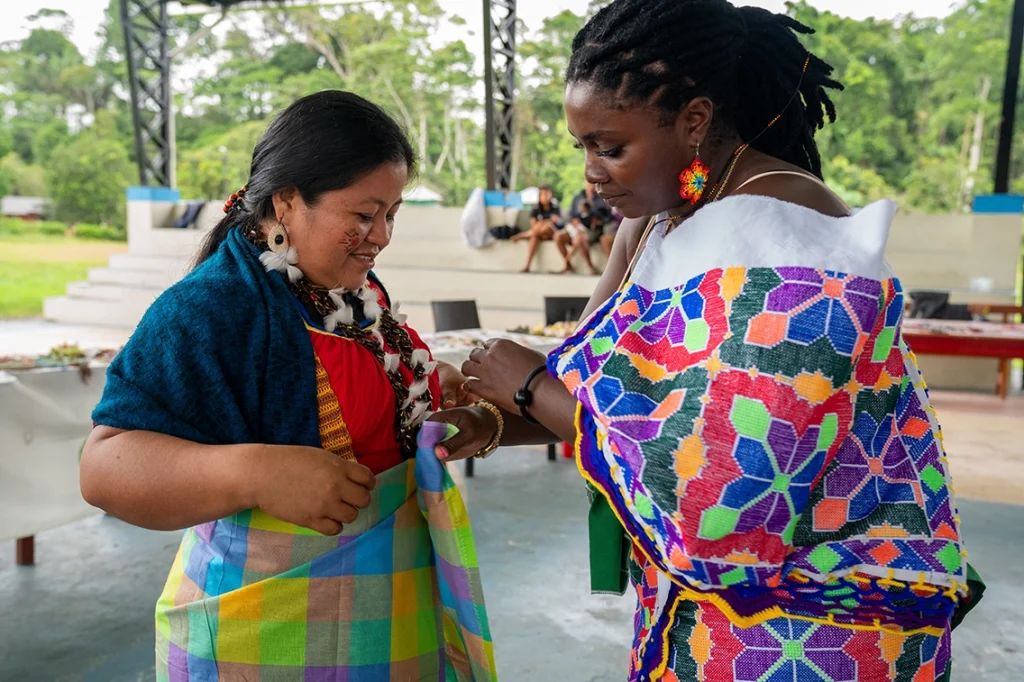

INTERVIEW
AN INTERVIEW WITH HUGO JABINI: THE ENVIRONMENTAL LEADER OF SAAMAKA KNOWS WHY TERRITORIAL DEFENSE IS EVERYONE’S RESPONSIBILITY
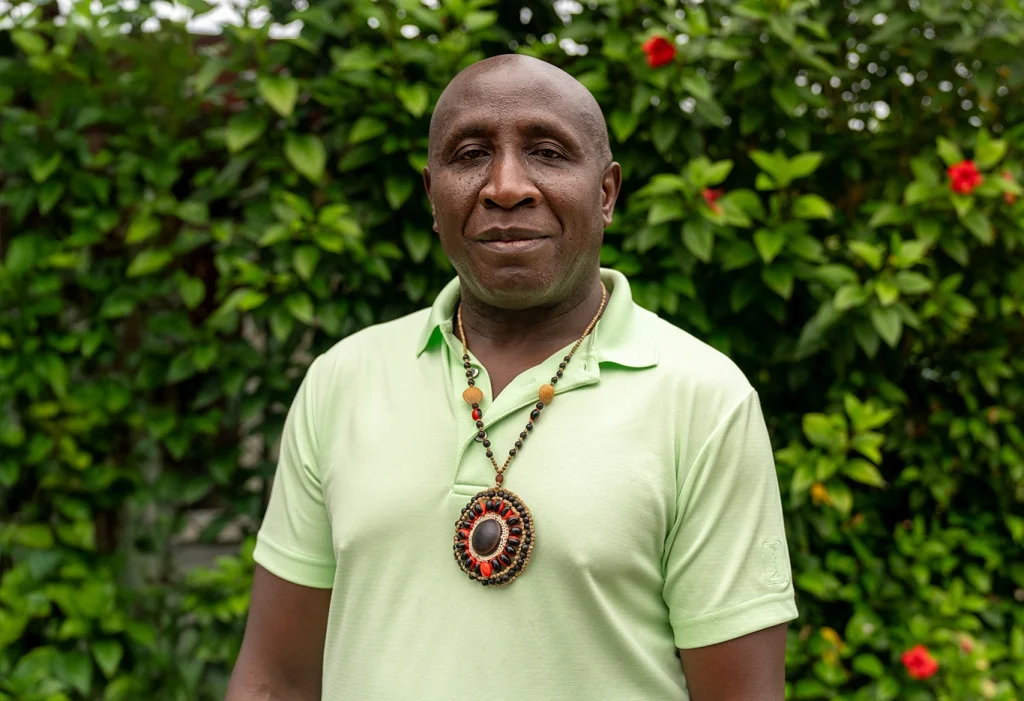
AF: How would you describe the relationship between the Saamaka people and their territory?
Hugo: We are part of our territory. We depend on the forest. We hunt, fish, and gather our medicines there. There is nothing more important for our survival. In our language, we say: We are the forest. So if you threaten the forest, you are threatening us.
AF: Can you tell us what experiences led you to see the defense of the territory as a personal as well as a collective responsibility?
Hugo: In the early 1990s, Chinese loggers invaded our territory. One day, they showed up in my community. We were young, and we were playing soccer, and they asked us to guide them through the forest, saying they had a concession for land there.
At that moment, I felt a threat approaching. I said, “How is it possible that they come to my community and ask me to take them to my backyard?”
They had to ask permission from the ancestral authority, which was my grandfather. We told them, “If you don’t talk to our leader, then no one will guide you through the forest.”
Then we found out that in another Saamaka community, the women’s gardens had been destroyed, cleared away for a concession. They blocked the streams and didn’t care about our people’s food security. That motivated us young people even more. We started contacting other communities to ask if they knew what was happening, but no one knew anything.
There had been no Free, Prior, and Informed Consent. So we shared the information and we organized a large meeting, brought together people from different communities, told them what was happening, and people were fired up. They said, “We have to do something. We have to stop this invasion.”
AF: You told us that communities organized themselves. How did women, young people, and wise elders come together in this struggle?
Hugo: Women are essential in the community. Many men go hunting or sometimes even collaborate with loggers, destroying the forest. But women stay, they’re caretakers, they sustain things.
When we found out that the Saamaka women’s gardens had been destroyed, we felt it was a direct attack on our food system, on our humanity. We said to ourselves, “This doesn’t just affect one person. It’s a common threat.” We organized another meeting, and the women came in droves, saying, “We have to act.” That was our strength. Women are our strength.
And although men are usually the ones who speak in public, women are the strategic advisors behind every action.
As young people, we were given the benefit of the doubt. They told us, “Let’s see what you can do.” And when we presented all the information, we received support. Some powerful leaders joined our struggle, and although they were at the forefront, we were the ones who designed the strategy.
AF: Were there times when companies tried to divide your community or buy off members of the community? How did you deal with that?
Hugo: Of course, some members collaborated with [companies] and gave them access. That creates division. But our community is based on collective ownership of the land and the forest. If someone only wants to benefit themself, they face opposition from everyone. And some corrupt leaders did not openly support the companies, but they acted behind the scenes to help them, until we finally exposed them publicly.
But most community members were against the invasion, and we managed to mobilize support. We showed that there were legal ways to fight, without weapons, without violence.
AF: What role does ancestral knowledge play in this struggle?
Hugo: Our ancestors taught us about the spiritual connection with the forest. How they managed to escape slavery and survive in the jungle thanks to their knowledge of the spirits of the forest. They told us stories of how they defeated the white man who came to capture them. That is the strength they left us.
We organize our meetings in that spirit. The elders always invoke the help of the ancestors, of their spirits, to give us strength.
AF: In 2007, the Saamaka people won a major victory when the Inter-American Court of Human Rights ruled that Suriname had violated the Saamaka people’s property rights by granting extractive concessions on your lands. What impact did this ruling have in reality? Did the government respect it?
Hugo: That’s a big question. When we won, it was a shock. At first, the government was very skeptical. They didn’t understand the Inter-American Court’s system or its impact on Suriname.
Then, even the president stood up and said publicly, “We will comply with the ruling.” After seeing that we won the case, politicians who had been skeptical said, “This is a good thing.”
But implementing the ruling has been difficult. Seventeen years have passed, and we are still in the process. The government complied with some minor things: they paid financial compensation and translated the ruling [into our language]. But the main thing—adopting a law that recognizes us as a People with rights to our territory, to manage it and demarcate it—depends on political will. And that is the big challenge.
Mining and logging companies finance politicians’ campaigns, so politicians protect those interests. That is why we seek international support, allies who can help put pressure on the Surinamese government.
And this ruling has also served as a precedent for other Indigenous and Afro-descendant peoples; I have traveled to many countries and universities, and our victory has become a global benchmark. We put the Saamaka people on the global map. And that is very valuable.
AF: How do you interpret the discourse that presents mining and other forms of extractivism as engines of development?
Hugo: That discourse is the viewpoint of the mining companies. For us, mining and logging are the destruction of the forest, of our way of life, of our future.
When there are mines, they pollute the rivers and streams, and they cannot be recovered. Right now, the forest is our strongest tool to fight the climate crisis. We do not want development at any cost. We want our territory, and we will decide whether or not to cut down trees. And as for mining: we do not want it. We believe that the forest is the real gold.
AF: If you could imagine your territory free from extractivism and mining, how would you dream it to be?
Hugo: For me, our territory is like paradise on Earth. I want it to stay that way. My vision is that we can maintain our territory as it is now—no industrial logging, no roads that bring pollution.
When people from the Western world are overwhelmed by stress, I want them to be able to come here and feel the harmony and peace of the forest, the clean water, the birdsong, and the scent of the fruits.
We want to be able to live well and in peace and to contribute to slowing down climate change, without having to do things that betray our culture for money. That is my vision.
AF: What will you take with you from this meeting with Indigenous Peoples from the Ecuadorian Amazon, who are also resisting?
Hugo: The most important thing for me is to be able to put a face to these people. Now, when I hear about Ecuador, I think of the faces I saw here.
And for my people, who have never traveled, who come from remote places, it was valuable to see that we are not alone. That there is a common struggle. That motivates us. They will return home with stories to tell, with the certainty that if we unite with other brothers and sisters from the Amazon, we will win this fight.
These physical encounters give us a lot of energy and spirit. I hope we can do this every year. You come to our community, and then we go to others as well. That way, we will continue to support each other.
AF: Could you share a phrase from the heart of the Saamaka forest?
Hugo: Yes. In my Saamaka language, we often say:
“Mátu de, mátu ta míi. Mátu ta míi, míi de mátu.”
It means: We are the forest. The forest is us. Protect the forest for future generations.
Credits:
Text: Erika Castillo and Aneth Lusitande | Editor: Allison Keeley
Design: Omar T. Bobadilla and Monica Aranda | Photos: Michelle Gachet

